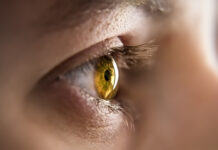The manifold biological uses of light have served organisms extremely well for millenia. But now, ever more rapidly, the great certainty that “night follows day” is becoming obsolete. Light pollution of the outdoors through artificial light-at-night has increased dramatically over the last two centuries, and this process is still accelerating. It seems obvious that today’s outdoor light levels at night, which in many places far exceed the brightness of a full moon — only 0.2 lux on the earth’s surface — would affect nature. But even in the early days of artificial light-at-night, watchful biologists observed its effects on wild organisms. For example, William Rowan wrote as early as in 1937 in Nature magazine about “Effects of traffic disturbance and light illumination on London starlings“.
Since then, the fundamental effects of light and dark on biology, and corresponding threats from light pollution, have become abundantly clear. A milestone was the publication of a book in 2006 entitled “Ecological Consequences of Artificial Night Lighting“. This book systematically compiled knowledge on land and water organisms and greatly stimulated research. Today, risks from outdoor lighting are so evident that light pollution is proposed to become “a focus of global change research in the 21st century.”
Ancient timers in an illuminated world
Light pollution affects living organisms on multiple levels. These range from effects on individuals, through social effects, and to those across the web of life, where species interact. Many effects occur via biological clocks, but other roles of light and darkness, for example through sensory perception, are also important.
Wild things are just like humans: light pollution can confuse clocks of individuals, and thereby impact behavior and physiology. If you walk through an illuminated town, these effects are audible: Close to a street light, you may hear birds sing in the dead of night; you might see a single branch of a leafless bush carrying flowers in winter; or, conversely, you might be surprised at the silence of a pond, when at a distance, you hear frogs loudly calling from a dark forest. Far more changes are hidden. A striking example is the response of ocean organisms in polar regions during winter darkness. A recent study showed that light from ships can disturb the behavior of many marine species down to a depth of 200 meters!

Behavioral changes are obvious indicators of the many changes that occur inside organisms if their time-keeping is confused by light pollution. Sleep of day-active organisms is usually decreased, and according to some studies, even disrupted. Of particularly concern are changes in physiology, for example in hormones. Our research on blackbirds has shown that even very low light levels, far less than direct street lights, suppress melatonin, and affect the circadian clock itself [1,2]. Other hormones, for example stress hormones, may in turn increase.
Linked are changes in multiple physiological systems, such as the immune system. Several studies of animals have shown altered immune functions as a consequence of light pollution or clock disruption. Recently it has become clear that this can also increase vulnerability to infectious disease. Presumably, immune systems have evolved to offer strong defenses at specific times of day, but now, risks occur at times when the body is far less well-prepared. In addition to clock effects, harm from light pollution can also arise through disturbed sensory systems and confused navigation. Well-known examples include the death of countless young sea turtles and migratory birds that are misled by night light, or whose orientation mechanisms may be disrupted.
Light-induced changes in the body affect an individual’s health and possibly its survival. They may furthermore affect its reproduction: most wild species have a clear seasonal cycle of reproduction. Plants wilt away in autumn, regrow in spring, flower, and carry seeds in summer. Hamsters, birds and many other species shrink their reproductive organs (ovaries and testes) in late summer, only to regrow them for the next reproductive season. These cycles are acutely sensitive to light and darkness. There is now abundant evidence that light pollution can induce untimely flowering and breeding in many species of plants and animals.
Effects of light pollution are not limited to an individual’s own physiology. Organisms interact with conspecifics and with other species. These interactions, too, are affected by light pollution. This is because organisms have all chosen their particular time niche — that is, they are active or reproduce at specific times. Thus, most songbirds are active during the day, whereas an owl would rest in the day and be active at night. Some plants, for example snowdrops, flower in late winter, whereas others — for example, autumn crocus — flower half a year later. All living things have their time, and they have evolved sensory capacities, clocks, and other body functions to fit it. In turn, their prey, their predators, their competitors and their parasites all account for this timing. Prey would try to hide, predators would exploit light or darkness for attack, competitors might evade each other by choosing different times, and parasites would try to circumvent times of top body defense.
 Light pollution puts this delicate, finely balanced system at risk because different species respond differently to light. For example, many moth species are magically attracted by artificial light at night. Instead of feeding or mating, they may circle a street light to exhaustion, or fall easy prey to a bat. In turn, predators may change their activities. For example, a day-active predator, the peregrine falcon, now catches nocturnally migrating birds in light-polluted areas. Conversely, some nocturnal predators avoid illuminated areas, with presumably grave consequences. One example are gardeners’ great foes, slugs, which thrive on light pollution. A recent experimental study showed that their numbers rose dramatically, up to a factor of over 100, in illuminated sites compared to similar sites that were kept in the dark. A final example is the elaborate pollination systems of flowers and their pollinating insect species. It has long been known that these systems involve refined evolutionary adaptations on the part of both the flowers and the pollinators. Many of these adaptations are rhythmic — for example the timing of nectar release coincides with activity patterns of the pollinators. A further recent study showed that in experimentally illuminated areas, pollination success dropped dramatically, with obvious consequences for plant reproduction.
Light pollution puts this delicate, finely balanced system at risk because different species respond differently to light. For example, many moth species are magically attracted by artificial light at night. Instead of feeding or mating, they may circle a street light to exhaustion, or fall easy prey to a bat. In turn, predators may change their activities. For example, a day-active predator, the peregrine falcon, now catches nocturnally migrating birds in light-polluted areas. Conversely, some nocturnal predators avoid illuminated areas, with presumably grave consequences. One example are gardeners’ great foes, slugs, which thrive on light pollution. A recent experimental study showed that their numbers rose dramatically, up to a factor of over 100, in illuminated sites compared to similar sites that were kept in the dark. A final example is the elaborate pollination systems of flowers and their pollinating insect species. It has long been known that these systems involve refined evolutionary adaptations on the part of both the flowers and the pollinators. Many of these adaptations are rhythmic — for example the timing of nectar release coincides with activity patterns of the pollinators. A further recent study showed that in experimentally illuminated areas, pollination success dropped dramatically, with obvious consequences for plant reproduction.
There is still endlessly much to learn about these complex interactions, but we will surely face cascades of effects across the living world. Fortunately, the clear signs of disruption have activated citizens, policymakers and funding agencies. For example, non-governmental organizations such as the IDA (International Dark Sky Association) have unrolled accreditation schemes for areas with low light-pollution. Such designated dark-sky reserves now serve as tourist attractions where people can experience the magic of starry nights. Funders, such as the EU, have sponsored major activities [1,2,3], and researchers are investigating effects of light and darkness on nature on the scale of landscapes. There are also promising initiatives of policymakers, local communities and industry, so that hopefully, the ever faster loss of the night can be slowed.
Barbara Helm PhD is Professor for Biological Rhythms of Natural Organisms at the University of Groningen and Visiting Professor at the University of Glasgow, and has followed birds from the countryside to the city to study the effect of urbanization and night illumination on their clocks, diet, reproduction and health. She also measures how animals track the changing seasons and how long-distance migratory birds are responding to climate change.






